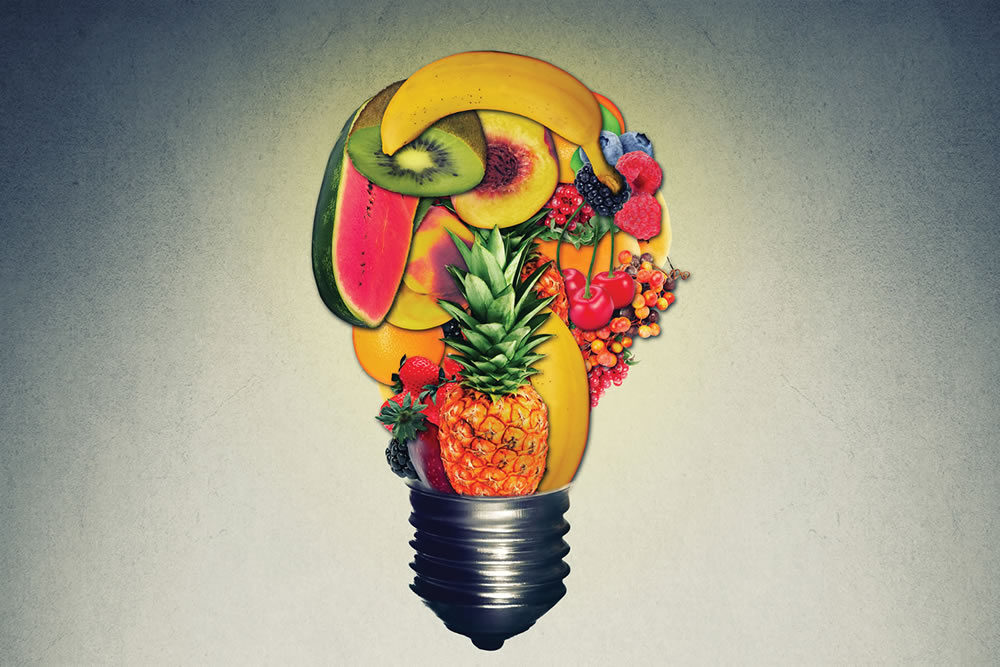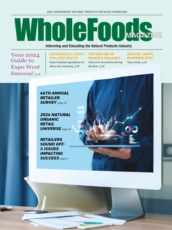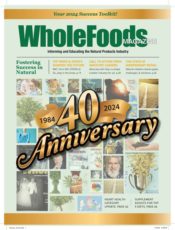It’s no secret that gluten-free, Paleo, vegan/vegetarian and plant-based lifestyle diets have been on a steady rise. Many of these lifestyle changes are motivated by specific health concerns, however more and more shoppers are browsing the shelves in hopes of improving their overall health through these lifestyle changes. With this, comes the question of whether this is simply a trend with room to grow and concerns of whether some of these diets are actually healthy for consumers who don’t necessarily need them.
Why Are Alternative Diets Being Adopted Now Like Never Before?According to a report released by The Canadian Celiac Association and the Allergen Control group in January of 2017, one reason for the demand in gluten-free foods is due to 83 percent of Americans going undiagnosed. The report states that “expected methods of accurate diagnosis will increase and, combined with increased awareness spurred by marketing and activist consumer groups, will create new avenues of growth in the market”(1).
In addition to the American population increasingly getting diagnosed with celiac disease or similar food allergies, Lola O’Rourke, education supervisor of the Gluten Intolerance Group, Auburn, WA, believes “since many foods which consumers commonly associate with gluten are often traditionally of relatively low nutritional quality (e.g. cookies, pizza, bread, donuts, etc.), many consumers who do not have a gluten-related disorder erroneously believe that going on a gluten-free diet will benefit their overall nutrition and health.”
In the case of vegan and vegetarian diets, category growth is being spurred because of the environmental impact. “It takes less water to make plant-based food and the carbon footprint is significantly lower,” said Greg Blake and Andre Kroecher, founders of Daiya, Vancouver, BC, Canada. “This is also a major factor in finding a more sustainable and cost-effective way of feeding the world’s population. Generally, as consumers become more conscious of how their food is made and where it comes from, they tend to make more conscientious, ethical and compassionate choices choosing plant-sourced food over animal-based products.”
According to Jaqui Karr, CGP, CSN, CVD, weight loss was a driving factor for many without a food sensitivity when turning to a gluten-free lifestyle. However, once consumers figured out there were fattening and toxic foods in the gluten-free world, the misconception lead to a decline in growth, but eventually consumers looking for true results have caused the growth we see today.
Nutritional Benefits & Top PrioritiesPaleo.A Paleolithic diet, or Paleo, is an effort to eat a diet better suited for our ancestors, due to the strong presence of processed foods in the modern human diet which are incompatible with our bodies. While everyone experiences different results, the nutritional benefit that some consumers experience while on a Paleo diet is an increase in nutrient absorption and an improvement in gut health. Also called the caveman diet, the Paleo diet consists of high-protein, high fiber and low carbohydrates. Allowed foods consist of grass-fed meats, fish/seafood, fresh fruits, fresh vegetables, eggs, nuts, seeds and oils such as olive and coconut.
However, because the diet seeks to emulate that of our hunter-gatherer ancestors, not farmers, wheat and dairy along with grains and legumes such as peanuts and beans should be avoided. In addition, refined sugars, potatoes, processed foods, any candy, salt and refined vegetable oils like canola oil are also not permitted on a Paleo diet. To help maintain a balance or fill nutritional gaps, Eileen Forte, president and CEO of Paleo Simplified, Clearwater, FL, suggests eating a colorful plate, avoiding white, processed foods and eating a balanced diet. In addition Taylor Collins, co-founder of Epic, Austin, TX, suggests a shopper’s top priority should be focusing on quality meat, such as grass fed and pastured animals, not only due to the nourishment they provide when compared to conventional meat, but also due to the animals’ more appropriate diets.
Vegan & Vegetarian.Maintaining a vegetarian diet involves eating lots of fruits and vegetables, greens, nuts, seeds and legumes while avoiding meat, fish, poultry as well as dairy and eggs, unless an lacto-ovo vegetarian or lacto-vegetarian which allow for dairy and eggs or dairy, but not eggs, respectively. A vegan diet, in addition to being vegetarian, also involves not using animal products and by-products of any kind such as honey, eggs, fur, cosmetics, wool and more. Veganism is more deeply rooted in ideology, specifically the ethical treatment of animals. Both these camps may require that people acquire nutrients that would have been otherwise acquired from meat from plant-based sources. This is crucial for being a healthy vegan or vegetarian.
According to the Mayo Clinic, the more restrictive one’s diet is, the more challenging it can be to get all the nutrients consumers may need. A vegan for example, eliminates natural food sources of vitamin B-12, as well as milk products, which are good sources of calcium (2). Although a multi-vitamin may help supplement any nutrients that are lacking, the main nutrimental benefits of a vegan and vegetarian diet are usually high in dietary fiber, magnesium, folic acid, vitamins C and D, iron and phytochemicals, and they tend to be lower in calories, saturated fat and cholesterol, long-chain n–3 (omega-3) fatty acids, vitamin D, calcium, zinc, and vitamin B-12 (3). “Protein is important to maintaining health, so those switching to a vegan/vegetarian diet should make sure they get adequate protein from plant-based sources, said Brad Lahrman, director of marketing of Lightlife Foods, Turnee Falls, MA. “Also, vitamin B12 is most commonly found in animal proteins so make sure to supplement this vitamin into one’s diet.”
Plant-Based.A plant-based diet includes eating whole, unprocessed, whole plant foods such as beans, fruits, lentils, nuts, seeds, vegetables and whole grains. Unlike a vegan diet, a plant-based diet does not include processed foods, which include oil, white flour and refined sugar, and for some consumers may also exclude or minimize the consumption of animal products such as dairy, eggs and meats (including fish and poultry). Someone who follows a plant-based diet may or may not be vegan and a vegan may or may not follow a plant-based diet. Nutritional benefits that are commonly associated with a plant-based diet include a lower rate of heart disease, high blood pressure, diabetes and obesity (4).
To ensure there is a balance and/or nutritional gaps are filled, Blake and Kroecher suggest adding plant-based staples that are rich in vitamins and minerals like “protein and nutrient-dense nuts, seeds and whole grains [that] provide protein, fiber and essential fatty acids. Plenty of fresh fruits and vegetables [that] provide antioxidants, enzymes, fiber and healthy and sustaining carbohydrates. Pulses, such as peas and legumes, are also great for boosting protein.” When choosing a plant-based diet, Lahrman says, “Variety is the key, as well as incorporating easy changes into recipes that someone currently enjoys by swapping in a plant-based option.” Blake and Kroecher believe the three top priorities should always be taste, texture and ingredients/nutrition. “Being healthier shouldn’t mean you have to sacrifice great-tasting food. For us, plant-forward eating isn’t about limiting your options, but a means of expanding one’s view of food.”
Gluten-Free.Primarily implemented to avoid the symptoms of celiac disease, a gluten-free diet excludes the protein gluten that causes inflammation of the skin, small intestines, and respiratory symptoms. Gluten is found in grains such as barley, rye, wheat and a cross of rye and wheat called triticale. For those without a food sensitivity, the main concept behind adopting a gluten-free lifestyle is to help boost energy, and to help alleviate “headaches, depression, ADHD, brain fog, IBS and so much more can disappear within weeks,” said Karr.
Karr also points out that it is important to note that going gluten-free is not “a miracle instant fix for everyone and to work with a qualified health care professional with specific training with gluten damage.” As for the top priorities that should be considered when going gluten-free, O’Rourke suggests looking for certified gluten-free labels by companies such as the Gluten-Free Certification Organization to ensure shoppers are picking out products that are legitimate. Karr suggests avoiding empty calories, whether they’re gluten-free or not and to also understand and compare nutrient density.
Will Growth Continue?“Over the past 2 years, the plant-based foods industry has seen an 8.7% growth, but there is still much work to be done in terms of educating consumers on the benefits of plant-based foods,” said Blake and Kroecher. “As a founding member of the Plant-Based Association, we are now able to advocate for better policies to meet the growing demand for plant-based foods. Over the coming years, we intend to increase visibility for plant-based foods and boost social acceptance while eliminating policies and practices that place plant-based alternatives to meats, milks, eggs, and butters at an economic disadvantage.” Lahrman also believes launching new lines of frozen items for time-crunched consumers and updating formulations such as plant-based faux-chicken products to remove egg whites to make them 100% animal free will allow shoppers who are following a full or part-time plant-based diet able to enjoy the products better.
According to O’Rourke, there is still much work to do. “Many consumers still feel that gluten-free is a fad and do not realize that millions of people who have celiac disease or a non-celiac gluten sensitivity (NCGS) require this diet for their personal health.” In addition, O’Rourke believes there will be a strong area of growth in the food service industry, but first, “there needs to be an understanding of safe processes and the dangers of cross-contamination by our restaurants and food establishments. Programs such as the Gluten-Free Food Service (GFFS) Certification are helping to lead the way in this area.” Kerr also believes a ton of work needs to be done, but more in helping consumers become aware of their options. “Pricing is still a factor, which is why demand for organic is not that high. The consumer is thinking as long as I avoid the worst of it — GMO — then I should be ok...I think that demand for organic will rise as consumers learn what non-organic food is doing to their bodies. Product formulations will be evolving faster in the next few years than we’ve seen in the past.”
Like a gluten-free lifestyle diet, Collins believes the Paleo diet has the potential to be mainstream. “The Paleo diet is for everyone, not just shoppers in the natural grocery segment. I believe that Paleo products have made a lasting impact in the natural foods world and are here to stay,” Collins explains. “However, there is very little availability in conventional channels. This makes sense because all major food revolutions begin in the natural space.” One particular new formulation that could help is the reformulation of products. “We recently reformulated all of our wild salmon products to incorporate the addition of coconut oil,” he says. “We decided to make this change in order to increase the levels of healthy fats within the product. Consumers are beginning to seek our products rich in high quality fats as a source of energy as well as an established nourishing macronutrient.”
Like Collins, Forte has also made changes in formulations, which could entice consumers with ethical concerns. “For me, it was the removal of egg white protein and adding in hemp protein,” she explains. “I could not verify what the chickens were eating so, even though they were farm raised, I opted to discontinue it."
Ten years from now, Jennifer Hryciw, customer service manager at Field Roast, Seattle, WA, believes all shoppers will be incorporating more vegan food into their daily lives. “Vegan food is a growth leader in the food industry,” she says. “We are all becoming aware of the impact we can make by shifting our choices regarding what we eat. It makes a difference. One meal a week or a purely vegan diet, it all moves the needle. People are finally starting to see that they don’t have to go all in with a vegan diet, although all the benefits are amplified when you do."
References1. Canadian Celiac Association, “Demand for gluten-free foods expected to substantially increase as awareness and diagnosis of celiac disease continue to rise.”http://gfstakeholdersession.com/asset/ALLERGEN_STAKEHOLDER_SESSIONS_REPORT_.pdf, Accessed, February 1, 2017.
2. Mayo Foundation for Medical Education and Research, “Nutrition and healthy eating,”http://www.mayoclinic.org/healthy-lifestyle/nutrition-and-healthy-eating/in-depth/vegetarian-diet/art-20046446?pg=2, Accessed February 3, 2017.
3. Winston J Craig. “Health Effects of Vegan Diets. The American Journal of Clinical Nutrition. (2009)http://ajcn.nutrition.org/content/89/5/1627S.full, Accessed February 3, 2017.
4. Tuso, P. J., Ismail, M. H., Ha, B. P., & Bartolotto, C. (2013). Nutritional Update for Physicians: Plant-Based Diets. The Permanente Journal, 17(2), 61–66.http://doi.org/10.7812/TPP/12-085, Accessed February 3, 2017.
Published in WholeFoods Magazine March 2017

NY Age-Restriction Law Takes Effect
April 22, 2024








